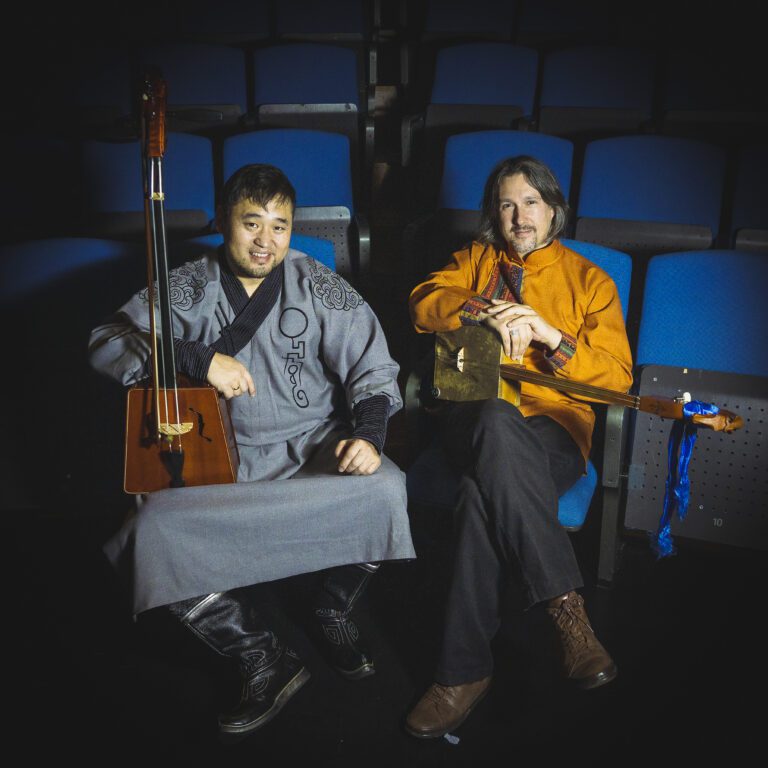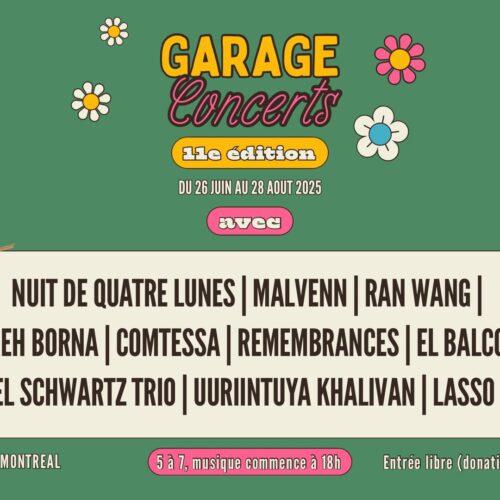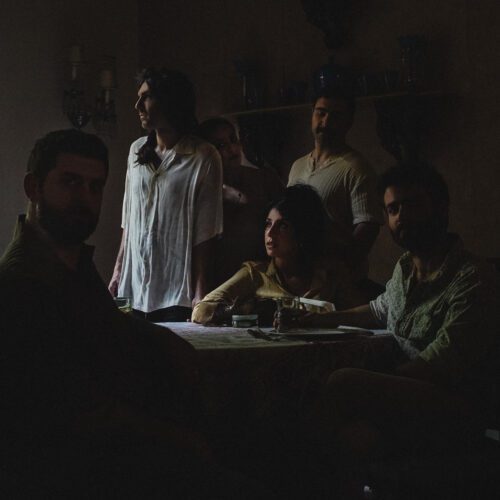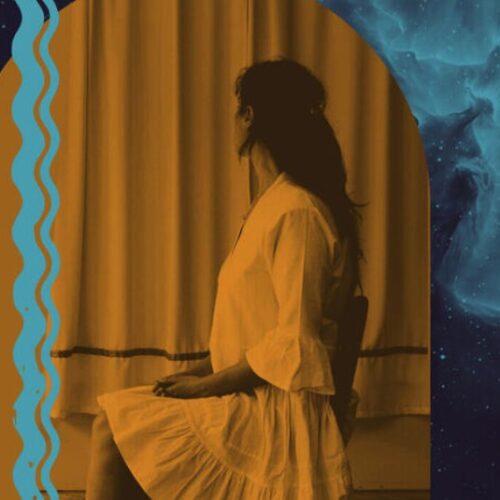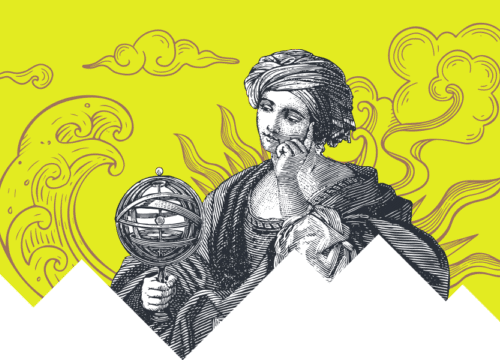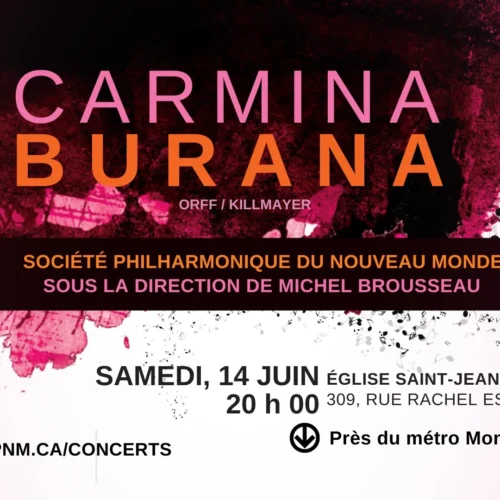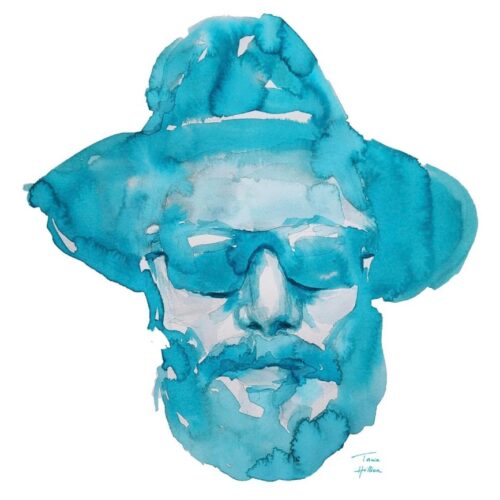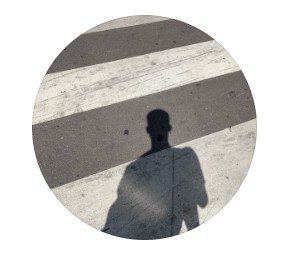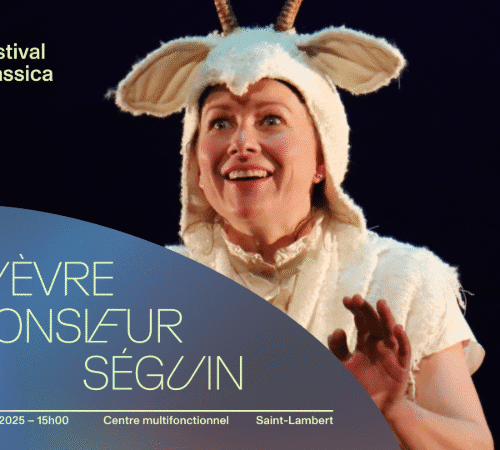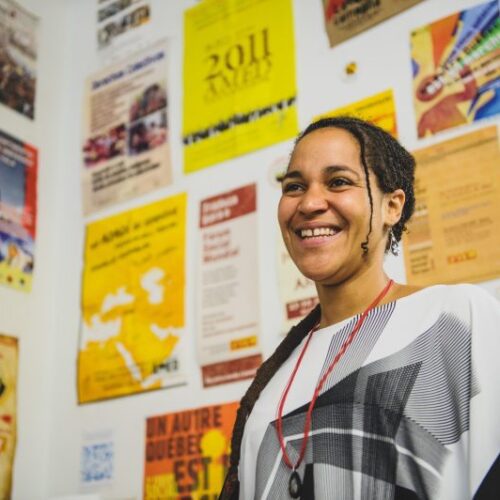Additional Information
The Centre des Musiciens du Monde (CMM) in Montreal and Traquen’art will be presenting a concert of Mongolian diphonic singing on Thursday 24 April 2025. In addition to this concert, the duo of Nasanjargal Ganbold, a Mongolian based in Germany and promoter of this ancestral culture in Europe, and Johanni Curtet, a Frenchman and the rare Westerner to have mastered the authentic technique of khöömii (pronounced with an expired H, “’Hhhoomii”’), will be busy touring and taking part in a week of activities. This technique is the reason behind the amazing, fascinating sounds that come out of the mouths of Mongolian (and now some Western) vocal artists, and which we spontaneously associate with the cultural universe of Mongolia, with Genghis Khan, horse races, the almost infinite blue sky, the vast steppes and white yurts.
Demostration ok khöömii by Johanni Curtet :
Ganbold and Curtet will spend the week in Eastern Canada, giving, in addition to Thursday’s performance at the CMM, a concert in Quebec City (with the Oktoecho ensemble), another in Toronto, at the Small World Music Center, and then an introductory workshop to the technique at the Maison de la culture Ahuntsic on Sunday 27 April. The workshop will be a golden opportunity for anyone who dares to try their voice at this unique and complex art. It’s a safe bet that some metal growlers will even find it easy to get their vocal cords on it! The invitation is extended to all those who recognise themselves!
In the interview I conducted with Johanni Curtet, we explored a number of aspects of khöömii, as well as what led this young Frenchman, who was initially turned on by the grunge rock style of the late 1990s, to develop a passion for guttural muscle control techniques whose origins are lost in time and subject to a number of anthropological hypotheses.
Curtet initially wanted to make music, to which his musician father responded with classical guitar lessons. But when he wanted to sing, he was told he shouldn’t because he did it out of tune! One day, on TV, he saw an ethnomusicologist, Trân Quang Hai, talking about the khöömii technique (which simply means ‘pharynx’). He was young and impressed by these sounds, but didn’t catch the name of the scientist. For years, he tried to repeat the sounds himself. It was probably a long way from the real thing, but it stayed with him continually, alongside his instrumental studies at the Conservatoire. During this training, he learned the rudiments of world voices, and then came the Inuit throat singing and the famous khöömii! He could now put into words the sounds that had fascinated him for so long. He then branched out into ethnomusicology, eventually completing his Master’s degree with… Trân Quang Hai.
From study grants to introductory trips, he perfected his knowledge and above all his mastery of this musical genre with some of the best teachers in Mongolia. He went on to create musical group projects, initiate collaborations, funded a Franco-Mongolian NGO (Routes nomades, ‘’nomadic roads’’) and began to share his love and knowledge of khöömii around the world, including now in Canada with this short tour.
He met Gambold in 2019 in Germany, but the duo we’ll be hearing this week has only been around since the end of 2024, created for the Ethnosoi festival in Helsinki!
He is often asked if this kind of practice hurts the throat. ‘’The body gets used to the instrument. As with any new technique, there’s a more difficult passage at the beginning, where you have to resist the temptation to quit. When I first started playing the guitar, my fingers hurt and I felt like giving up. But when I realised that the hard skin forming at the end of my fingers would enable me to play better and project the sound more effectively, my mind got used to it and my body got used to it. It’s true that there can be a tingling in the throat in the first moments of learning, but when you learn the right gestures and the right method, it doesn’t have any negative impact.”
In any case, if it hurt, the Mongols wouldn’t have been practising this art for so long and in such large numbers. But why do they do it anyway?
‘“There are several hypotheses, including that of shamanic use.”’ It’s true that if you imagine yourself in a remote time, in the wild steppes, in a nomadic clan imbued with a powerful imaginary universe, a shamanic ritual in which a man in a trance begins to resonate vocally in this way, it must have been very impressive. That said, over time it became, according to Curtet, a pastime for shepherds. But be careful! Not like whistling on the way to the market. In the case of Mongolian nomadism, it’s more a question of communion with nature and with the very nature of the Universe in which these people live. It’s a very vertical nature, with a very strong link between the underground, the visible earth, and the infinite sky (and beyond). To push out these multiple sounds, based on a basic drone created by the tightening of the throat muscles, then filtered through various mouth positions with the lips and tongue, is literally to connect tellurically, vibratory, magnetically and spiritually with the Universe.
That said, the shamanism inherent in the early musicological studies of khöömii led to a Western exploitation through the New Age movement, which turned it into a source of yogic and meditative transcendence, but watered down the technique itself. So much so that, ironically, there are probably more Westerners practising this ‘facilitated’ technique than Mongolians practising the authentic, more complex and difficult one. In the end, Johanni Curtet remains one of the few to do it for real. That’s why he started teaching an authentic khöömii course at the Institut international des musiques du monde in Aubagne around 5 years ago.
Montreal’s equivalent (the CMM) is perhaps the only one of its kind in America, which is why the Metropolis is so privileged to have access to so many concerts and workshops on the world’s most learned and fascinating musical art traditions. And now we can even bring them to other cities in the area, like Quebec City and Toronto. A Mongolian artist, Uurintuya Khalivan, who plays the morin khuur, the horse-headed fiddle, moved here some time ago, and I’ve already told you about her.
Curtet is passionate and utterly fascinating in his display of knowledge on the subject. It’s a simple and convivial display, which I personally enjoyed during this hour-long interview that could have gone on much longer, and of which I’m omitting a large part here because the man is inexhaustible and I’m running out of space. I can’t recommend enough that you put his visit (and that of his travelling companion) on your agenda as soon as possible. You shouldn’t miss an opportunity for discovery and enrichment like this when it arises.
Concert in Quebec City (Musée national des Beaux-Arts) on Wednesday 23 April
Concert in Montreal (Centre des Musiciens du Monde) on Thursday 24 April
Concert in Toronto (Small World Centre) on Friday 25 April
Introductory khöömii workshop at the Maison de la culture Ahuntsic (in collaboration with Oktoecho) on Sunday 27 April, 2-4pm. Bookings by email: [email protected]
